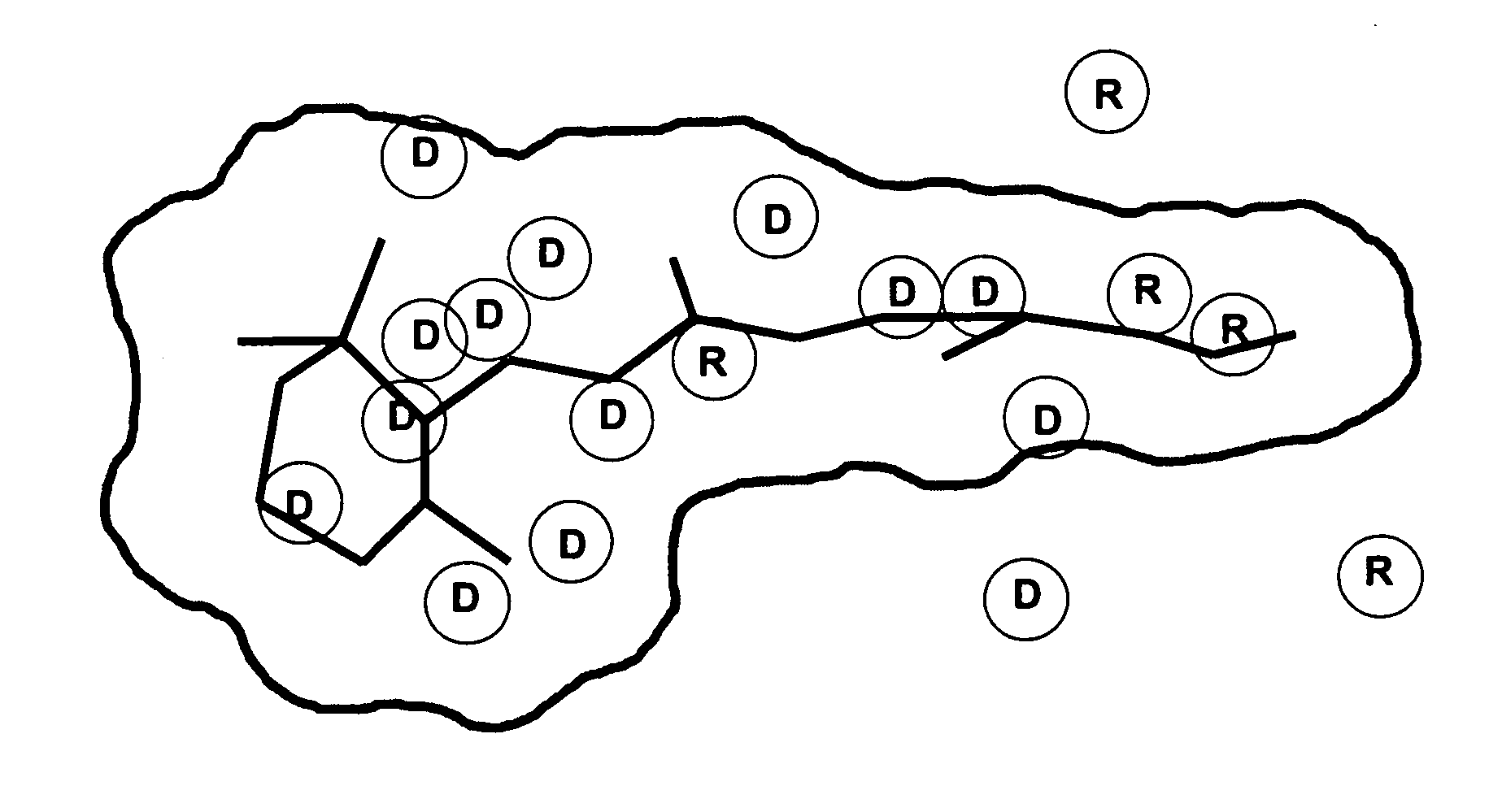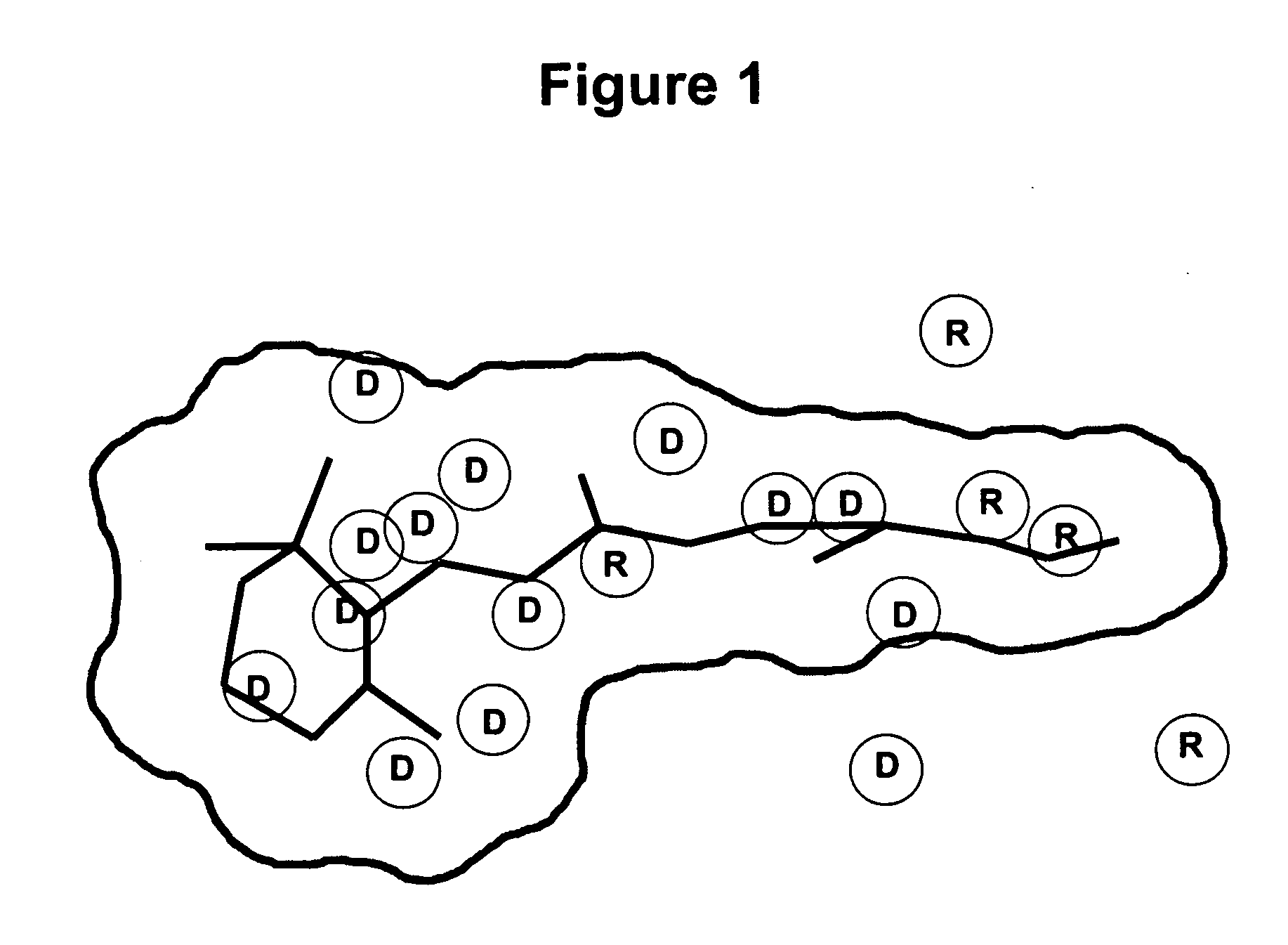Opsin-binding ligands, compositions and methods of use
a technology of opsin and ligands, applied in the field of opsin-binding ligands, can solve the problems of ophthalmic, opsin can exhibit improper folding, and affect the visual perception of the animal so affected, and achieve the effects of preventing rhodopsin regeneration, preventing or slowing the formation of toxic substances, and reducing light toxicity
- Summary
- Abstract
- Description
- Claims
- Application Information
AI Technical Summary
Benefits of technology
Problems solved by technology
Method used
Image
Examples
example 1
(E)-3-(2,6,6-Trimethylcyclohex-1-enyl)acrylic acid
[0575]The title compound, obtained as a colorless crystalline solid (14.2 g, 52%), was prepared from β-ionone (26.7 g, 0.139 mol) according to the procedure of [Shimasaki, H.; Kagechika, H.; Fukasawa, H.; Kawachi, E.; Shudo, K. Chem. Pharm. Bull. 1995, 43, 100-107]. Rf=0.4 (25:75 ethyl acetate:hexanes); 1H-NMR (400 MHz, CDCl3) δ 12.16 (br s, 1H), 7.56 (d, J=16.0 Hz, 1H), 5.85 (d, J=16.0 Hz, 1H), 2.08 (t, J=6.0 Hz, 2H), 1.79 (s, 3H), 1.66-1.58 (m, 2H), 1.50-1.46 (m, 2H), 1.08 (s, 6H) ppm.
example 2
(E)-3-(2,6,6-Trimethylcyclohex-1-enyl)acrylamide
2a. (E)-3-(2,6,6-Trimethylcyclohex-1-enyl)acryloyl chloride
[0576]To a round bottom flask charged with (E)-3-(2,6,6-trimethylcyclohex-1-enyl)acrylic acid (1, 6.00 g, 3.00 mmol) in anhydrous dichloromethane (2.5 mL) under argon was added oxalyl chloride (0.50 mL, 5.50 mmol) dropwise via syringe. To this stirred solution was added two drops of N,N-dimethylformamide (DMF) and the reaction was stirred at room temperature for 3 hours. The reaction mixture was concentrated in vacuo (40° C.) to yield a yellow-brown oil which was carried forward without further purification.
2b. (E)-3-(2,6,6-Trimethylcyclohex-1-enyl)acrylamide
[0577]In a round bottom flask (E)-3-(2,6,6-trimethylcyclohex-1-enyl)acryloyl chloride (320 mg, 1.50 mmol) was dissolved in tetrahydrofuran (THF, 6.0 mL). The reaction mixture was cooled to 0° C. and a solution of ammonium hydroxide (0.4 mL) was added. The reaction mixture was warmed to room temperature while stirred for 4 h...
example 3
(E)-N-Methyl-3-(2,6,6-trimethylcyclohex-1-enyl)acrylamide
[0578]To a solution of (E)-3-(2,6,6-trimethylcyclohex-1-enyl)acrylic acid (1, 50.0 mg, 0.257 mmol) in DMF (1.0 mL) was added 2-(7-aza-1H-benzotriazole-1-yl)-1,1,3,3-tetramethyluronium hexafluorophosphate (HATU, 97.7 mg, 0.257 mmol). The solution was stirred at room temperature for 30 minutes then diisopropylethylamine (66.4 mg, 0.514 mmol) and methylamine hydrochloride (17.4 mg, 0.257 mmol) was added to the reaction mixture. The reaction was then stirred at room temperature for 4 hours.
[0579]The reaction was quenched with a 1M solution of hydrochloric acid (2 mL) and the biphasic mixture was separated. The organic layer was concentrated in vacuo (40° C.) and the crude material loaded on to silica gel for purification via flash column chromatography running an isocratic eluent of 30% ethyl acetate in hexanes. The title compound was isolated as a white solid (56 mg, 86%). Mp=84-88° C.; Rf=0.34 (50:50 ethyl acetate:hexanes); 1H N...
PUM
| Property | Measurement | Unit |
|---|---|---|
| structure | aaaaa | aaaaa |
| Ra | aaaaa | aaaaa |
| aggregation | aaaaa | aaaaa |
Abstract
Description
Claims
Application Information
 Login to View More
Login to View More - R&D
- Intellectual Property
- Life Sciences
- Materials
- Tech Scout
- Unparalleled Data Quality
- Higher Quality Content
- 60% Fewer Hallucinations
Browse by: Latest US Patents, China's latest patents, Technical Efficacy Thesaurus, Application Domain, Technology Topic, Popular Technical Reports.
© 2025 PatSnap. All rights reserved.Legal|Privacy policy|Modern Slavery Act Transparency Statement|Sitemap|About US| Contact US: help@patsnap.com



